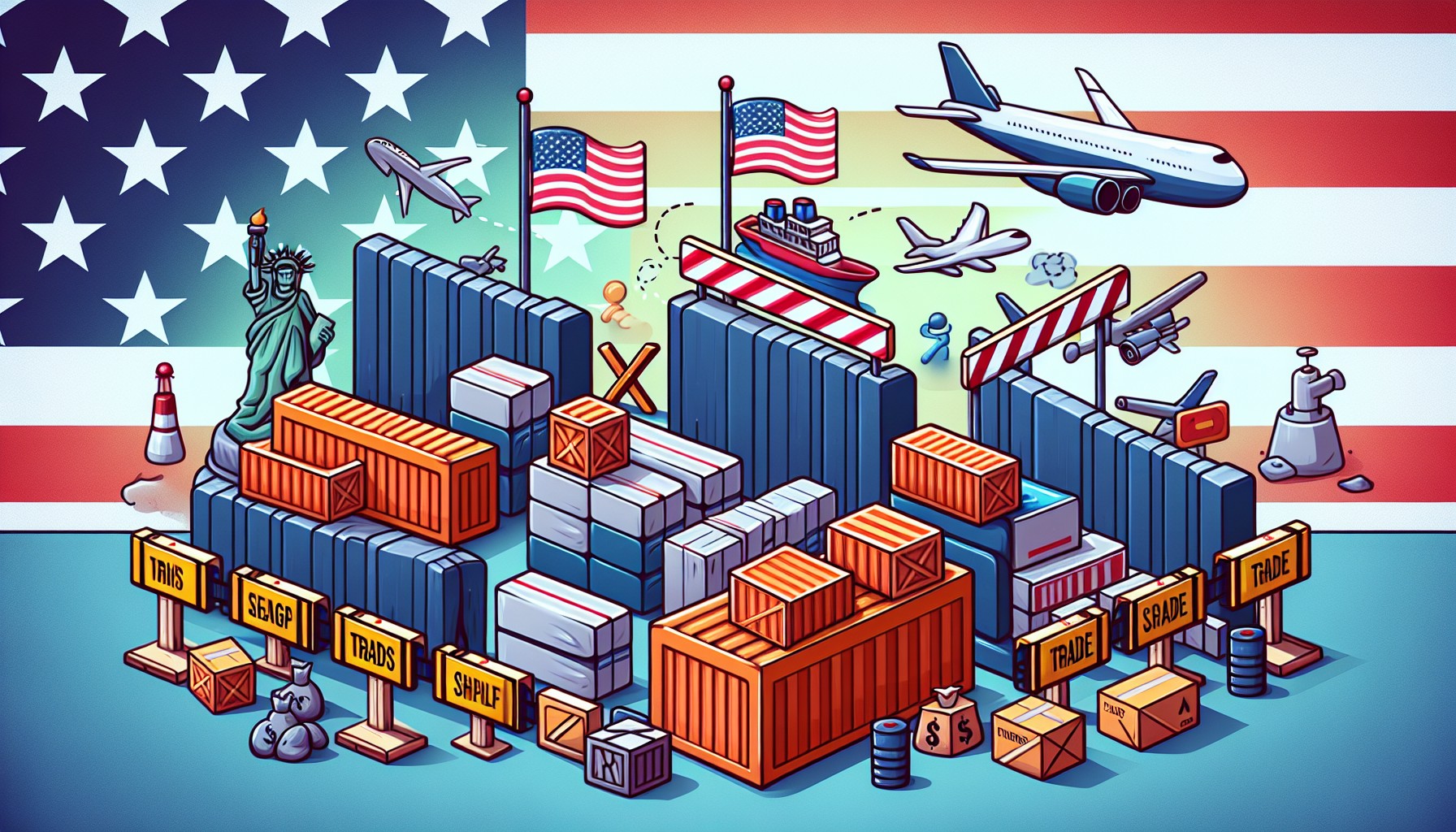
The 2025 National Trade Estimate (NTE) Report on Foreign Trade Barriers, published by the Office of the United States Trade Representative (USTR), is an annual assessment that identifies and evaluates key foreign trade barriers affecting U.S. exports, investment, and digital trade. This report provides valuable insights into global trade challenges and helps shape U.S. trade policy by highlighting areas where market access is restricted due to tariff and non-tariff barriers, technical regulations, subsidies, intellectual property rights concerns, and digital trade restrictions.
The 2025 NTE Report is released at a time when the U.S. is considering reciprocal tariff policies under the Trump administration, aiming to address imbalanced trade practices and counteract policies that disadvantage American businesses. The report also underscores trade tensions with key partners, including the European Union (EU), China, Canada, India, and Australia.
Key Findings of the 2025 NTE Report
1. Tariff and Non-Tariff Barriers
- The report highlights high tariffs and restrictive quotas imposed by U.S. trading partners, affecting a wide range of American exports.
- The European Union’s tariff and regulatory delays in approving genetically modified crops (GMO) remain a significant concern, as they limit U.S. agricultural exports.
- Canada’s supply management system imposes high tariffs on U.S. dairy products, restricting market access for American farmers.
- India continues to maintain high import duties on a variety of products, including medical devices, agricultural goods, and automobiles, raising concerns about market fairness.
2. Technical Regulations and Standards as Trade Barriers
Technical barriers to trade (TBTs) remain a challenge for U.S. exporters, with several key developments highlighted in the report:
- The European Union’s new sustainability and recycling regulations for plastic packaging introduce compliance challenges that may create unfair disadvantages for U.S. exporters.
- China’s cybersecurity and data localization rules require foreign companies to store data within China, increasing operational costs for U.S. technology firms.
- Japan’s food labeling regulations have been flagged as disproportionately affecting U.S. agricultural exports, leading to increased compliance costs.
3. Country-Specific Trade Concerns
The report provides detailed country-by-country assessments of trade barriers that hinder U.S. exports and investment.
China:
- Subsidies to domestic industries, forced technology transfers, and intellectual property rights violations continue to be major concerns.
- China’s state-controlled economy creates an uneven playing field for American businesses.
European Union (EU):
- The EU’s regulatory approval delays for genetically modified products and restrictions on U.S. biotech exports remain contentious.
- Carbon Border Adjustment Mechanism (CBAM) may unfairly impact U.S. exporters by imposing additional costs related to carbon emissions.
Canada:
- Canada’s dairy tariffs and supply management system continue to restrict U.S. dairy exports.
- Discriminatory liquor retail policies in some provinces disadvantage U.S. alcoholic beverage exporters.
India:
- High tariffs on electronics, automobiles, and agricultural products make market access difficult for U.S. firms.
- Restrictions on cross-border data flows impact U.S. tech and financial services companies.
Australia:
- The News Media Bargaining Code raises concerns about digital trade restrictions.
- Pharmaceutical pricing policies and intellectual property rules may limit market access for U.S. drug manufacturers.
4. Digital Trade and Data Localization Restrictions
With the growth of e-commerce and digital trade, the report highlights new barriers that affect U.S. technology companies and digital service providers.
- China’s strict data localization requirements force U.S. companies to store user data domestically, increasing compliance costs.
- India’s data protection rules raise concerns about potential restrictions on cross-border data transfers.
- The European Union’s Digital Markets Act (DMA) and Digital Services Act (DSA) impose additional regulatory burdens on American tech firms.
5. U.S. Policy Response and Strategic Trade Measures
The 2025 NTE Report serves as a foundation for U.S. trade policy and supports upcoming reciprocal tariff strategies under the Trump administration. The administration has signaled a stronger stance against unfair trade practices, particularly focusing on:
- Tariff retaliation against nations imposing higher duties on U.S. goods.
- Negotiating trade agreements to ensure better market access for U.S. businesses.
- Targeting digital trade barriers that hinder American technology firms.
The report plays a crucial role in identifying policy areas where the U.S. may take retaliatory actions to protect domestic industries.
Conclusion: Navigating Global Trade Challenges
The 2025 National Trade Estimate Report provides a comprehensive analysis of global trade barriers and serves as a strategic tool for shaping U.S. trade policy. By addressing tariff and non-tariff barriers, intellectual property concerns, digital trade restrictions, and regulatory challenges, the USTR aims to strengthen U.S. global trade competitiveness.
The findings in this report will likely influence future trade negotiations, tariff policies, and enforcement actions as the U.S. seeks to create a more balanced and fair global trading environment.
Summary by DigitalTrade4.EU
